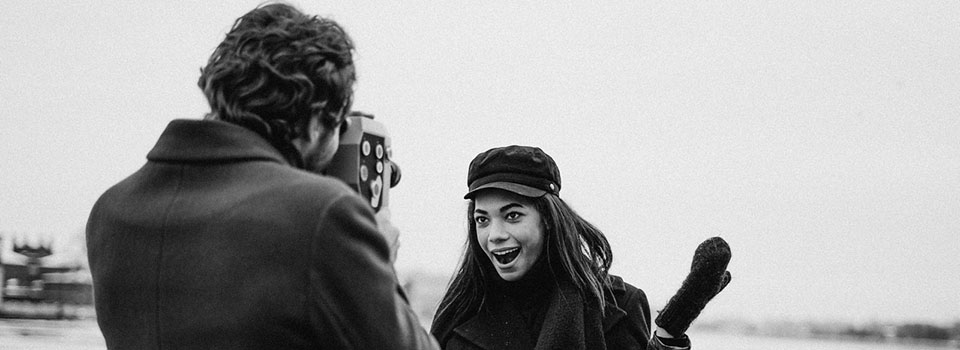
Naomi, Kate, Cindy, Claudia… There’s no need to name names to let readers know who we’re talking about. The images of the models of the 90’s still live in our memory. They say that today’s models are no match for them. But perhaps it’s not so much about the people in front of cameras as it is about the people holding the cameras in their hands.
On September 3, the fashion photographer Peter Lindbergh passed away at the age of 75.
In 1988 Peter Lindbergh took a series of photos for American Vogue. Six models took part in the shoot: Estelle Lefebvre, Linda Evangelista, Karen Alexander, Tatiana Patitz, Rachel Williams and Christy Turlington. The Malibu beach was chosen as the setting. No swimsuits, no accessories, no makeup – the girls were dressed in matching white men’s cut shirts. No artificial poses: they just stood and looked into the lens.
Grace Mirabella, the magazine’s longtime editor, was not impressed by the photos. “She just threw them in the basket,” Lindbergh later recalled. His work did seem defiant at the time. Vogue of the 80s was a reflection of its era and loved the lush hairstyles, flashy outfits, massive jewelry, thick shadows and luxurious interiors. However, just a few months later Mirabella stepped down and was replaced by the revolutionary Anna Wintour. She commissioned her first cover as editor to Peter Lindbergh.
Two years later, in 1990, the photographer repeated his multi-figure portrait but for the British Vogue. On the streets of New York in jeans and laconic tops he posed the same Evangelista, Patitz and Turlington plus two new heroines, Naomi Campbell and Cindy Crawford. Fashion historians believe that it was with this photo that a new era – the era of supermodels – began.
Lindbergh’s real name is Peter Brodbeck. He was born in 1944 in Leszno, Poland. He grew up in Duisburg. Already at the age of 14 he left school and got a job as a window dresser in the local department store Karstadt. In the early ’60s he enrolled at the Berlin Academy of Fine Arts, hoping to become a painter, but he quickly became disillusioned with the educational process and, following the example of his idol Vincent van Gogh, left for Arles, France. After living there for a few months, he hitchhiked across Europe and North Africa and returned to Germany only two years later.
Lindbergh’s images were published by Harper’s Bazaar, Vanity Fair, Rolling Stone, Wall Street Journal and, of course, all the branches of Vogue magazine, from British to Italian. The real world fame for him came in the 90’s. In his work, the photographer brought to the forefront a woman of the new era: free, independent, sophisticated, not in need of asserting its status with branded clothing and cosmetics. First the man, and then everything else. Unlike his predecessors, Lindbergh didn’t shoot faces and bodies – he shot living women. Each of his models was a vivid personality.
He made no secret of his passion for filmmaking and often drew inspiration from revered authors. His love of high-rise buildings, futuristic sets, deep shadows and sloping lines in composition are from the great and terrible Fritz Lang, whose “Metropolis” he saw back in Germany. The series, with models walking around New York City in men’s jackets with wings behind their backs or soaring over city streets, was born after the premiere of Wim Wenders’ “Skies Over Berlin.” The silvery gray fog with which Lindbergh so often envelops his characters is a reference to Andrei Tarkovsky.
There were other innovations as well. For example, Lindbergh was one of the first to introduce subject matter into fashion photography. He was never interested in statics at all: he came into the profession to tell stories. Many of his pictures look like a fascinating series with first and second plan characters and dramatic turns. The most famous is a photo from the Invasion series: model Helena Christensen in a white dress and white boas walking down the road next to a small alien.
Surprisingly, his photos don’t age at all. Calvin Klein still uses Lindbergh’s advertising shot from 1995 for the “Eternity” fragrance campaign, a black-and-white portrait of Mark Wanderloo and Christy Turlington, whose faces and intertwined hands take up almost all the space of the frame. “Yes, that picture still looks like it was taken yesterday,” Lindbergh boasts. – And what’s in it that can get old?”
Shortly before his death, Lindbergh had managed to design the covers for the September issues of fashion magazines Numero and British Vogue. For the latter, he worked with a guest editor, Prince Harry’s wife Meghan Markle, creating a series of photographs dedicated to female empowerment. The legendary magazine’s front page features 15 activists from various fields who are making a difference in the world. Lindbergh’s portraits are very revealing of the artist’s main quality – the ability to bring out the natural beauty of people.